Sparse Reconstruction for Temperature Distribution Using DTS Fiber Optic Sensors with Applications in Electrical Generator Stator Monitoring
Abstract
:1. Introduction
2. Overview of Thermal Imaging System
3. Distributed Temperature Sensing (DTS) Acquisition Model
4. Dictionary of Hotspots
5. Imaging Reconstruction Algorithm
| Algorithm 1: Image Reconstruction Algorithm |
| Require: g% DTS readings, H% sensitivity matrix, D% Dictionary of hotspots, Q% finite difference matrix |
| Require: % Regulariztion parameter (set empirically) |
| Require: e=10–9 % avoids zero division |
| Require: HD = H × D % impulse response of the dictionary |
| Require: = HD′ × g % intial solution |
| Require: % minimum update to stop |
| 1: while stop > |
| 2: = |
| 3: Wh = diag(1 ./ (abs(g − HD × ) + e)) % data term weights |
| 4: Wl = diag(1 ./ (abs(Q × ) + e)) % penalization term weights |
| 5: = (HD′ × Wh × HD + × (Q′ × Wl × Q))\(HD′ × Wh × g) % least-squares |
| 6: stop = norm( − )/norm() % stopping criterion |
| 7: end while |
| 8: f = reshape(D × ,209,200) % thermal image |
6. Results
6.1. Simulated Results
6.2. Experimental Results
7. Conclusions
Acknowledgments
Author Contributions
Conflicts of Interest
References
- Tagare, D.M. Risk, Operation, and Maintenance of Hydroelectric Generators. In Electric Power Generation: The Changing Dimensions; John Wiley & Sons Inc.: Hoboken, NJ, USA, 2011; pp. 15–43. [Google Scholar]
- Stone, G.C.; Wu, R. Examples of Stator Winding Insulation Deterioration in New Generators. In Proceedings of the IEEE 9th International Conference on Properties and Applications of Dielectric Materials, Harbin, China, 19–23 July 2009; pp. 180–185.
- Bertenshaw, D.R.; Smith, A.C. Field correlation between electromagnetic and high flux stator core tests. In Proceedings of the 6th IET International Conference on Power Electronics, Machines and Drive, Bristol, UK, 27–29 March 2012; pp. 1–6.
- Fan, Y.; Wen, X.; Liu, Q. Research on Stator 3D Temperature Field of Hydro-Generator under Sudden Short Circuit. In Proceedings of the IEEE Power and Energy Engineering Conference, Wuhan, China, 27–31 March 2009; pp. 1–4.
- Stone, G.C.; Boutler, E.A.; Culbert, I.; Dhirani, H. Electrical Insulation for Rotating Machines: Design, Evaluation, Aging, Testing and Repair; IEEE Press Series on Power Engineering: Hoboken, NJ, USA, 2004. [Google Scholar]
- Bazzo, J.P.; Mezzadri, F.; da Silva, E.V.; Pipa, D.R.; Martelli, C.; da Silva, J.C.C. Thermal Imaging of Hydroelectric Generator Stator Using a DTS System. IEEE Sens. J. 2015, 15, 6689–6696. [Google Scholar] [CrossRef]
- Hudon, C.; Lévesqu, M.; Zouand, L.; Picard, J. Determination of Stator Temperature Profile Using Distributed Sensing. In Proceedings of the 2013 IEEE Electrical Insulation Conference, Ottawa, ON, Canada, 2–5 June 2013; pp. 191–195.
- Martelli, C.; da Silva, E.V.; Sousa, K.M.; Mezzadri, F.; Somezi, J.; Crespin, M.; Kalinowski, H.J.; da Silva, J.C.C. Temperature sensing in a 175MW power generator. Proc. SPIE 2012, 8421. [Google Scholar] [CrossRef]
- Bazzo, J.P.; Mezzadri, F.; da Silva, E.V.; Pipa, D.R.; Martelli, C.; da Silva, J.C.C. Temperature Sensing of High Power Generator Stator using DTS. In Proceedings of the OSA Optics & Photonics Congress, Barcelona, Spain, 27–31 July 2014; pp. 27–31.
- Hu, C.; Wang, J.; Zhang, Z.; Jin, S.; Jin, Y. Application research of distributed optical fiber temperature sensor in power system. In Proceedings of the IEEE Communications and Photonics Conference, Shanghai, China, 13–16 November 2011; pp. 1–6.
- Ukil, A.; Braendle, H.; Krippner, P. Distributed Temperature Sensing: Review of Technology and Applications. IEEE Sens. J. 2012, 12, 885–892. [Google Scholar] [CrossRef]
- Bologniniand, G.; Hartog, A. Raman-based fibre sensors: Trends and applications. Opt. Fiber Technol. 2013, 19, 678–688. [Google Scholar] [CrossRef]
- Yilmaz, G.; Karlik, S.E. A Distributed Optical Fiber Sensor for Temperature Detection in Power Cables. Sens. Actuators A 2006, 125, 148–155. [Google Scholar] [CrossRef]
- Thorncraft, D.A.; Sceats, M.G.; Poole, S.B. An Ultra High Resolution Distributed Temperature Sensor. In Collected Papers of the International Conferences on Optical Fiber Sensors 1983–1997; Optical Society of America: Monterey, CA, USA, 1992; pp. 258–261. [Google Scholar]
- Höbel, M.; Ricka, J.; Wüthrich, M.; Binkert, T. High-resolution distributed temperature sensing with the multiphoton-timing technique. Appl. Opt. 1995, 34, 2955–2967. [Google Scholar] [CrossRef] [PubMed]
- Chen, Y.; Hartog, A.H.; Marsh, R.J.; Hilton, I.M.; Hadley, M.R.; Ross, P.A. A fast high-spatial-resolution Raman distributed temperature sensor. SPIE 2014, 9157. [Google Scholar] [CrossRef]
- Dyer, S.D.; Tanner, M.G.; Baek, B.; Hadfield, R.H.; Nam, S.W. Analysis of a distributed fiber-optic temperature sensor using single-photon detectors. Opt. Soc. Am. 2012, 20, 1–11. [Google Scholar] [CrossRef] [PubMed]
- Bahrampour, A.R.; Moosavi, A.; Bahrampour, M.J.; Safaei, L. Spatial resolution enhancement in fiber Raman distributed temperature sensor by employing ForWaRD deconvolution algorithm. Opt. Fiber Technol. 2011, 17, 128–134. [Google Scholar] [CrossRef]
- Wang, Z.; Chang, J.; Zhang, S.; Luo, S.; Jia, C.; Sun, B.; Jiang, S.; Liu, Y.; Liu, X.; Lv, G.; et al. Application of wavelet transform modulus maxima in raman distributed temperature sensors. Photonic Sens. 2014, 4, 142–146. [Google Scholar] [CrossRef]
- Saxena, M.K.; Raju, S.D.; Arya, R.; Pachori, R.B.; Ravindranath, S.V.; Kher, S.; Oak, S.M. Raman optical fiber distributed temperature sensor using wavelet transform based simplified signal processing of Raman backscattered signals. Optics Laser Technol. 2015, 65, 14–24. [Google Scholar] [CrossRef]
- Bazzo, J.P.; Pipa, D.R.; Martelli, C.; Silva, J.C.C. Improving Spatial Resolution of Raman DTS Using Total Variation Deconvolution. IEEE Sens. J. 2016, 16, 4425–4430. [Google Scholar] [CrossRef]
- Elad, M. Sparse and Redundant Representations: From Theory to Applications in Signal and Image Processing; Springer: New York, NY, USA, 2010. [Google Scholar]
- Yang, J.; Wright, J.; Huang, T.; Ma, Y. Image Super-Resolution as Sparse Representation of Raw Image Patches. In Proceedings of the IEEE Conference on Computer Vision and Pattern Recognition, Anchorage, AK, USA, 23–28 June 2008; pp. 1–8.
- Yao, R.; Liu, C.; Rao, F. Analysis of 3D thermal field in the stator of large hydro-generator with evaporation-cooling system. In Proceedings of the IEEE International Electric Machines and Drives Conference, Madison, WI, USA, 1–4 June 2003; Volume 2, pp. 943–947.
- Chaaban, M.; Leduc, J.; Hudon, C.; Merkouf, A.; Torriano, F.; Morissette, J.F. Thermal Analysis of Large Hydro-Generator Based on a Multi-Physic Approach. In Proceedings of the CIGRE Colloquium on New Development of Rotating Electrical Machines, Beijing, China, 11–13 September 2011; pp. 109–116.
- Johansson, R. Continuous-Time Model Identification and State Estimation Using Non-Uniformly Sampled Data. In Proceedings of the 15th IFAC Symposium on System Identification, Saint-Malo, France, 6–8 July 2009; pp. 1163–1168.
- Domínguez-Molina, J.A.; Gonzalez-Farías, G.; Rodríguez-Dagnino, R.M. A Practical Procedure to Estimate the Shape Parameter in the Generalized Gaussian Distribution; CIMAT Technical Report; Guanajuato University: Monterrey, Mexico, 2001. [Google Scholar]
- Dong, W.; Zhang, L.; Shi, G.; Li, X. Nonlocally Centralized Sparse Representation for Image Restoration. IEEE Trans. Image Process. 2013, 22, 1620–1630. [Google Scholar] [CrossRef] [PubMed]
- Aharon, M.; Elad, M.; Bruckstein, A. K-SVD: An Algorithm for Designing Overcomplete Dictionaries for Sparse Representation. Trans. Image Process. 2006, 54, 4311–4321. [Google Scholar]
- Jafari, M.G.; Plumbley, M.D. Fast Dictionary Learning for Sparse Representations of Speech Signals. IEEE J. Sel. Top. Signal Process. 2011, 5, 1025–1031. [Google Scholar] [CrossRef]
- Bjorck, A. Numerical Methods for Least Squares Problems; SIAM Society for Industrial and Applied Mathematics: Philadelphia, PA, USA, 1996. [Google Scholar]

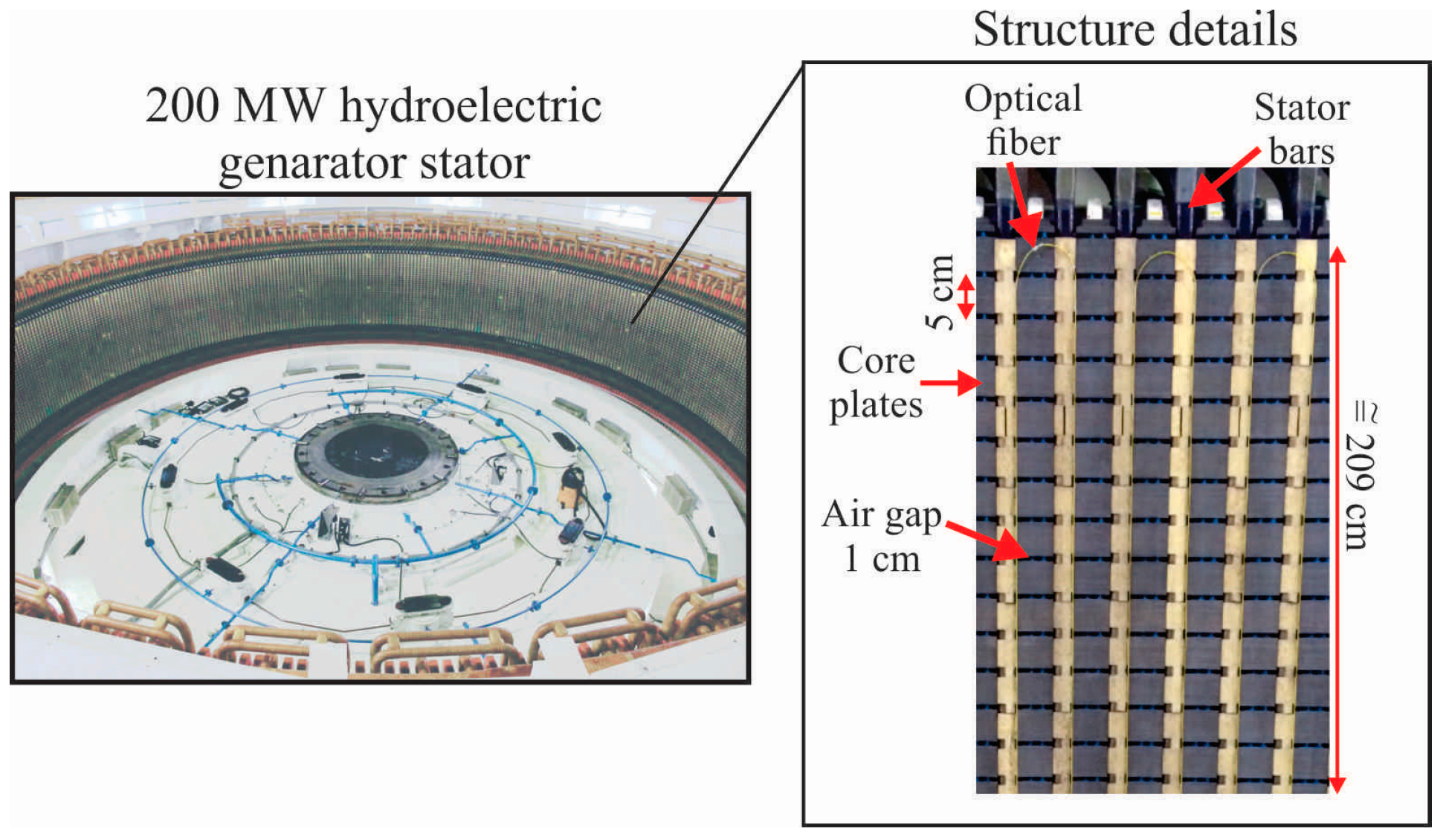
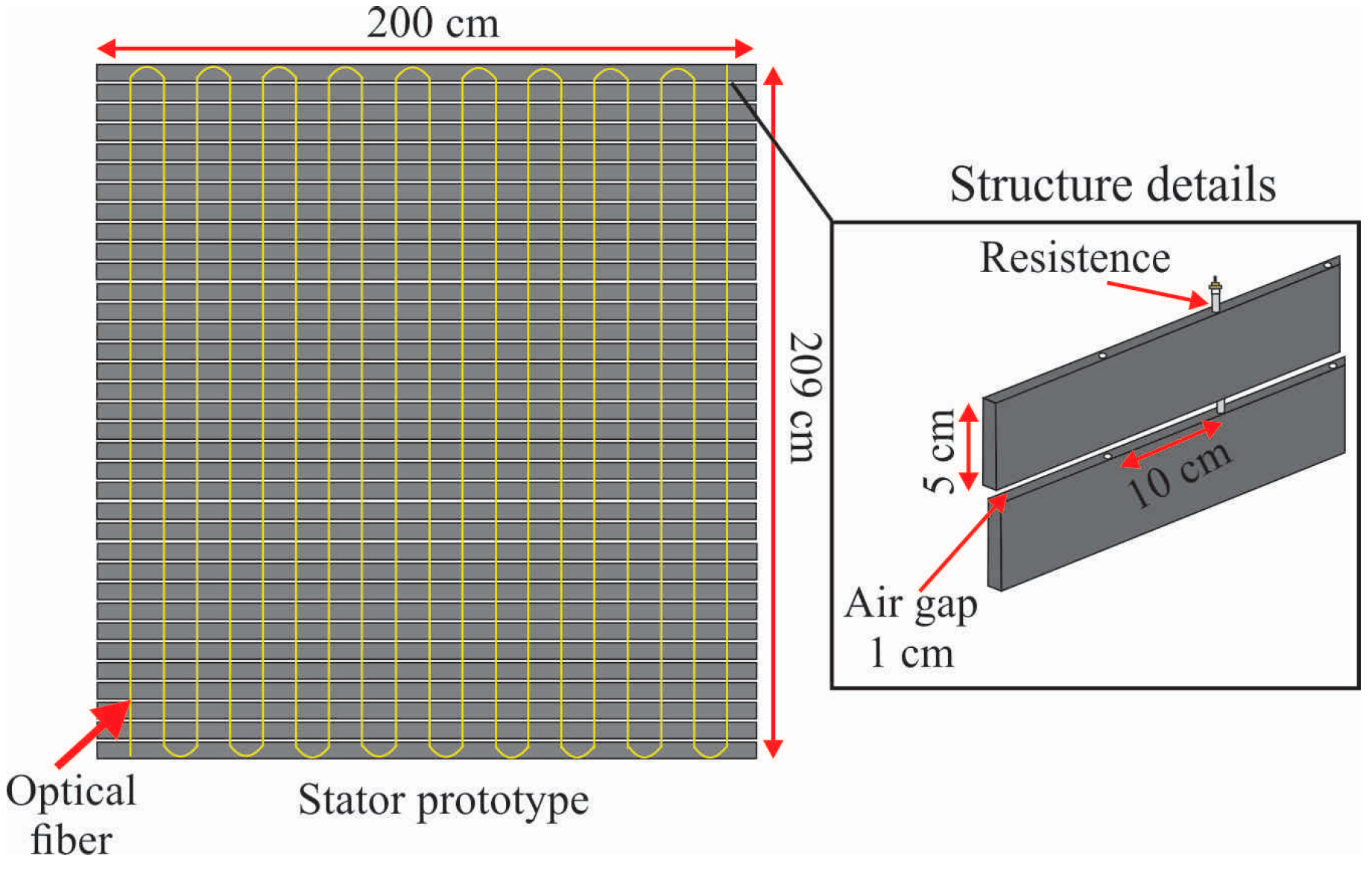
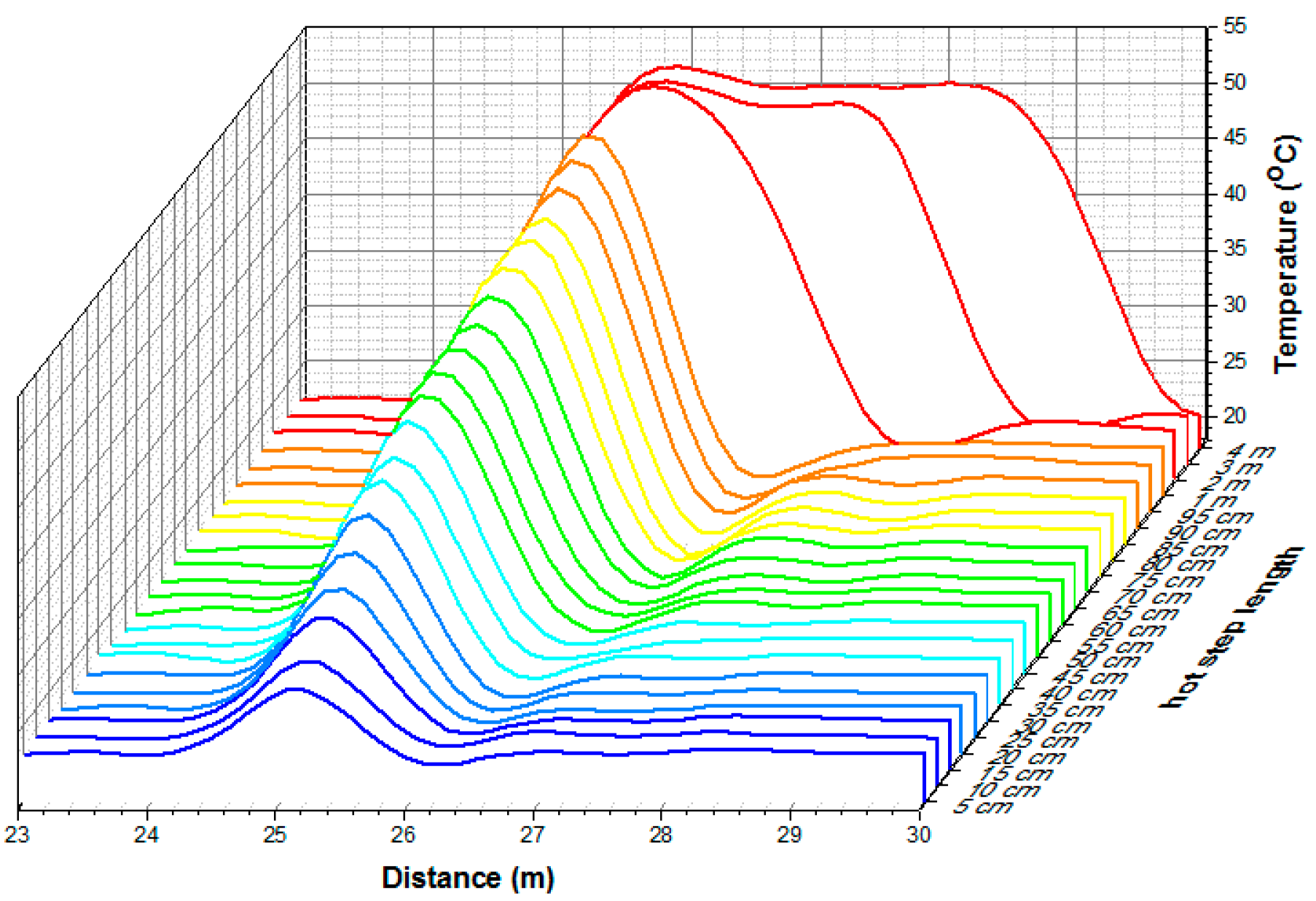

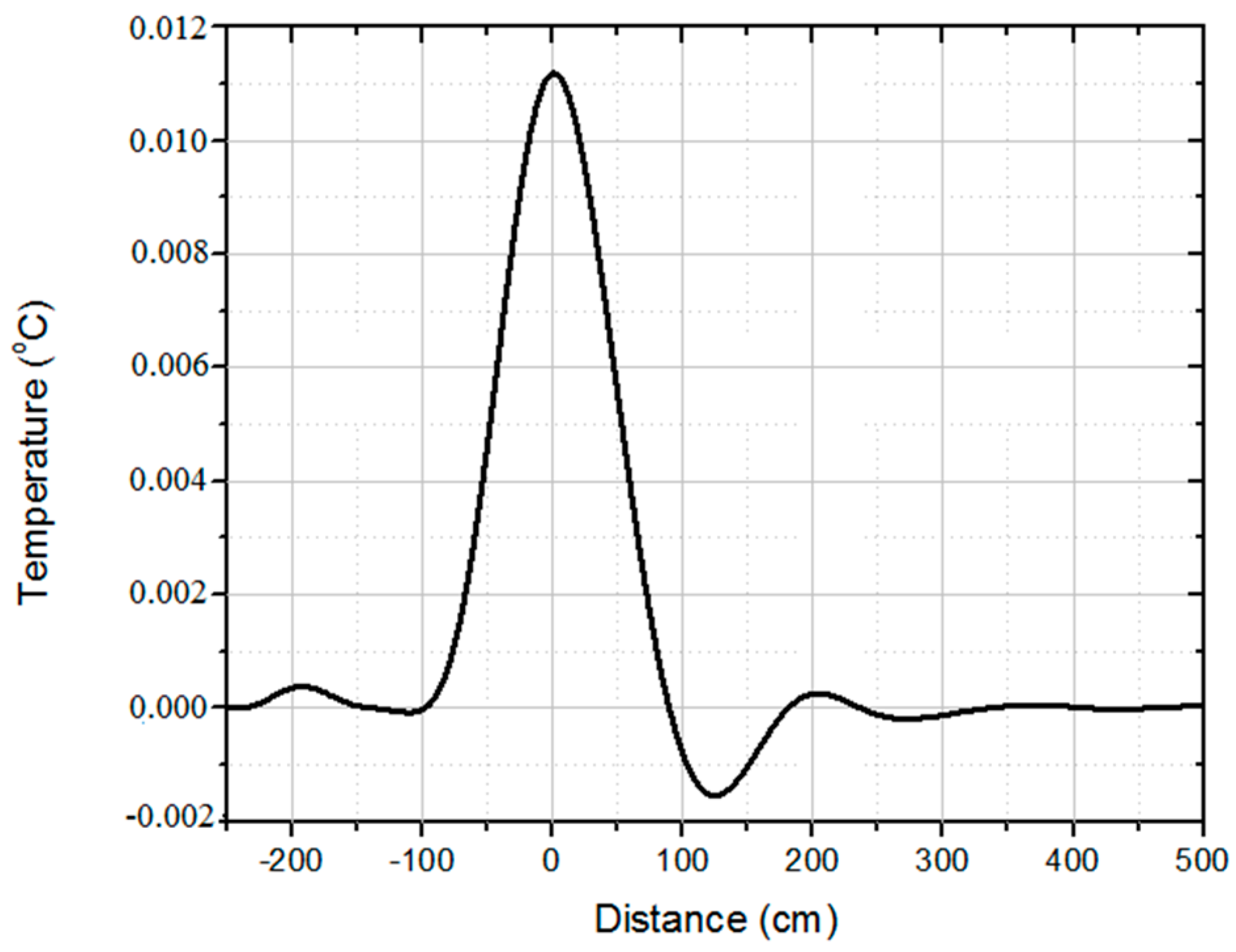

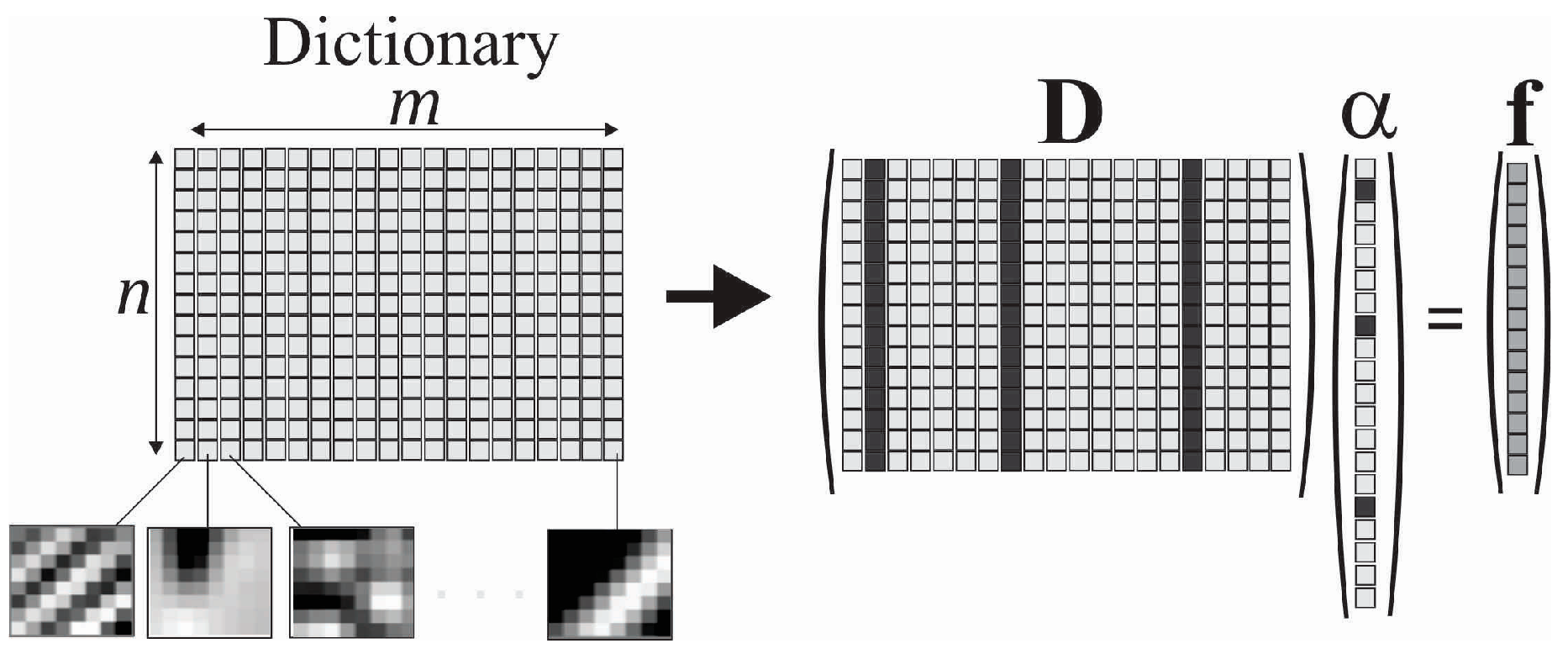

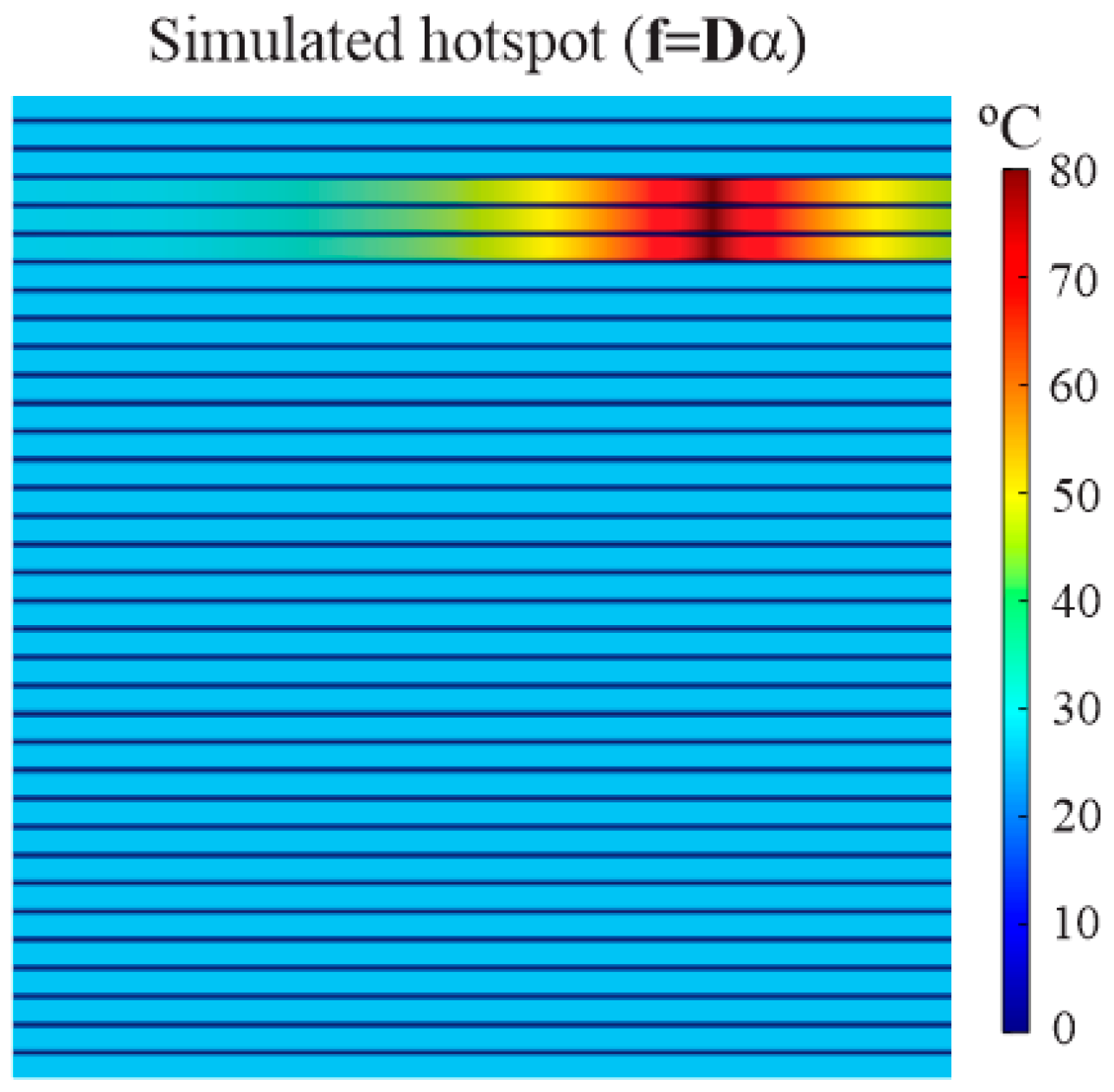

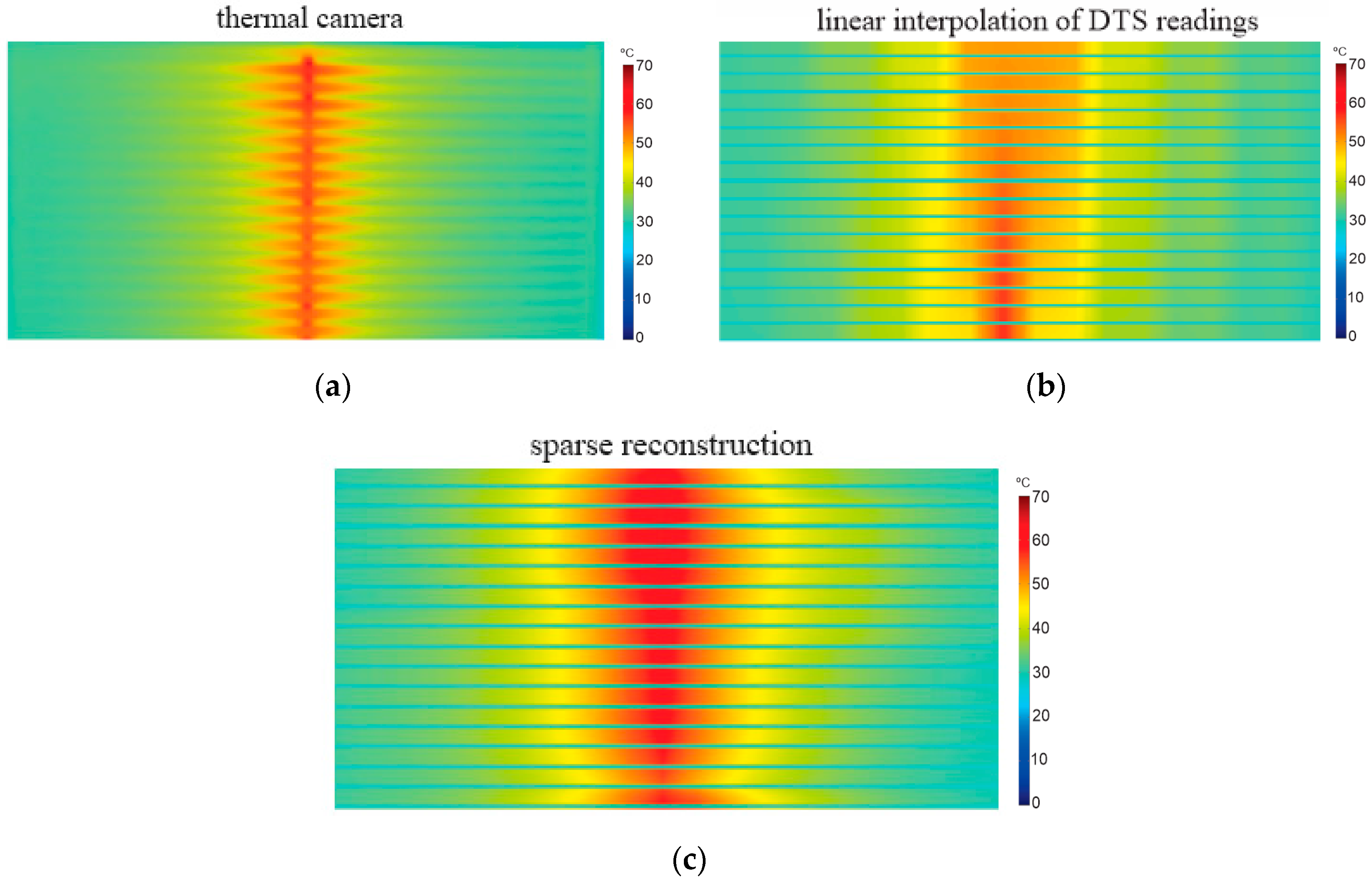

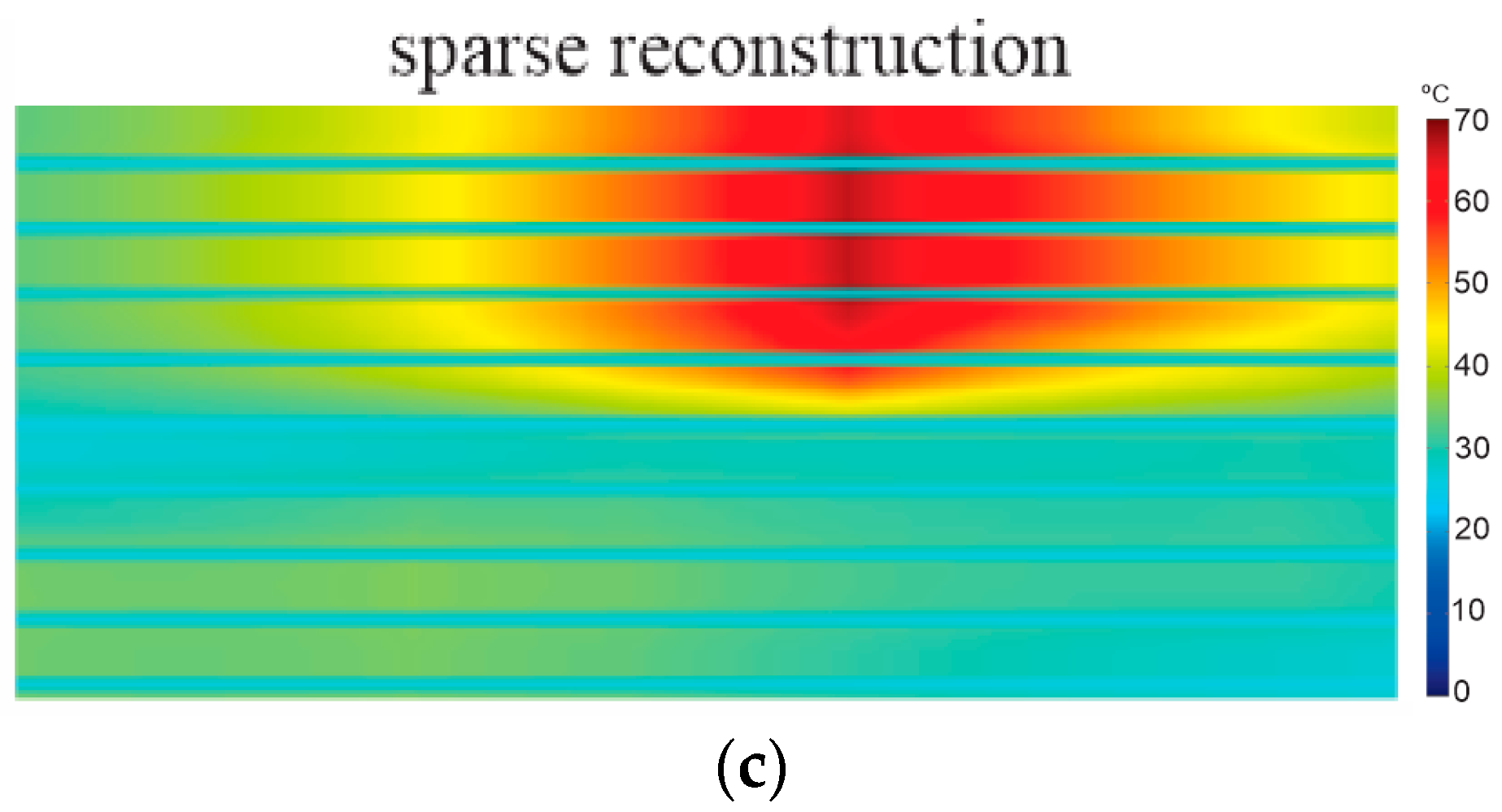

| Noise Level (SNR) | MSE (mean square error) | MTD (Maximum Temperature Difference) |
|---|---|---|
| Noiseless | 0.5657 | 0.1 °C |
| 50 dB | 2.0921 | −0.5 °C |
| 40 dB | 6.9929 | −3.6 °C |
| 30 dB | 9.3758 | −12.1 °C |
| 20 dB | 16.595 | −20.9 °C |
| 10 dB | 21.8149 | −23.7 °C |
| SNR | Hotspot Length | MTD (Maximum Temperature Difference) |
|---|---|---|
| 50 dB | 15 cm | −0.5 °C |
| 50 dB | 14 cm | −3.7 °C |
| 50 dB | 13 cm | −5.1 °C |
| 40 dB | 22 cm | −0.9 °C |
| 40 dB | 21 cm | −1.6 °C |
| 40 dB | 20 cm | −2.4 °C |
| 30 dB | 27 cm | −0.7 °C |
| 30 dB | 26 cm | −1.8 °C |
| 30 dB | 25 cm | −2.6 °C |
© 2016 by the authors; licensee MDPI, Basel, Switzerland. This article is an open access article distributed under the terms and conditions of the Creative Commons Attribution (CC-BY) license (http://creativecommons.org/licenses/by/4.0/).
Share and Cite
Bazzo, J.P.; Pipa, D.R.; Da Silva, E.V.; Martelli, C.; Cardozo da Silva, J.C. Sparse Reconstruction for Temperature Distribution Using DTS Fiber Optic Sensors with Applications in Electrical Generator Stator Monitoring. Sensors 2016, 16, 1425. https://doi.org/10.3390/s16091425
Bazzo JP, Pipa DR, Da Silva EV, Martelli C, Cardozo da Silva JC. Sparse Reconstruction for Temperature Distribution Using DTS Fiber Optic Sensors with Applications in Electrical Generator Stator Monitoring. Sensors. 2016; 16(9):1425. https://doi.org/10.3390/s16091425
Chicago/Turabian StyleBazzo, João Paulo, Daniel Rodrigues Pipa, Erlon Vagner Da Silva, Cicero Martelli, and Jean Carlos Cardozo da Silva. 2016. "Sparse Reconstruction for Temperature Distribution Using DTS Fiber Optic Sensors with Applications in Electrical Generator Stator Monitoring" Sensors 16, no. 9: 1425. https://doi.org/10.3390/s16091425
APA StyleBazzo, J. P., Pipa, D. R., Da Silva, E. V., Martelli, C., & Cardozo da Silva, J. C. (2016). Sparse Reconstruction for Temperature Distribution Using DTS Fiber Optic Sensors with Applications in Electrical Generator Stator Monitoring. Sensors, 16(9), 1425. https://doi.org/10.3390/s16091425






